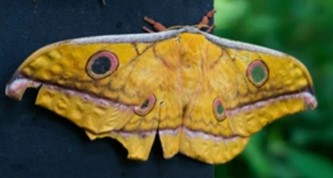
Antheraea yamamai is a species of Lepidoptera in the family Saturniidae, also known as the mountain silkworm. It is a silk spitting insect. Silk is high grade textile material. Small silkworms can be reared indoors, while large silkworms are released in the quercus (oak) forest and are left to feed under artificial care. The silk is about 600 meters long, with high fibre, and the strength and elongation are 2.5 times and 1.5 times of bombyx mori linnaeus silk, respectively, which can maintain its natural green color after reeling. The fabric is soft and wrinkle-free. Antheraea yamamai grows on the dracaena trees in the forest near the rivers, lakes and ponds.
Antheraea yamamai is a very rare species of wild colored silk silkworm in the world. Antheraea yamamai pupae can account for about 50% of the dry weight of protein, and essential elements with zinc and magnesium being the highest. However, antheraea yamamai is available in small quantities, resulting in a shortage of supply. Therefore, it is of great importance to improve the resource utilization of antheraea yamamai by using modern research methods. Lifeasible provides molecular marker services for antheraea yamamai with Random Amplified Polymorphic DNA (RAPD), and Simple Sequence Repeat (SSR) help discover and utilize dictyoploca japonica resources.
| Service content | Detail |
| Evolutionary and kinship analysis of antheraea yamamai based on RAPD |
|
| Population genetic structure of antheraea yamamai based on SSR technique |
|
Lifeasible offers SSR technology to analyze the population genetic structure of antheraea yamamai. We use antheraea yamamai as a material to construct the SSR fingerprint for the identification of antheraea yamamai germplasm resources and reveal the genetic variation of the population.
Lifeasible analyzes the kinship of antheraea yamamai using RAPD technique. We amplify the genomic DNA of antheraea yamamai using random primers with good repeatability and obtain several RAPD markers to analyze the genetic distances between silkworm species and to investigate the relatedness of each other. The UPGMA method was used to construct a clustering map to study their kinship relationships. The study of their affinities is of great significance for the discovery and utilization of wild silkworm resources.
Lifeasible provides molecular marker services for antheraea yamamai by RAPD, and SSR to analyze the kinship and affinities, and the population genetic structure of antheraea yamamai. If you are interested in our services or if you have any questions, please click online inquiry for more detailed information.